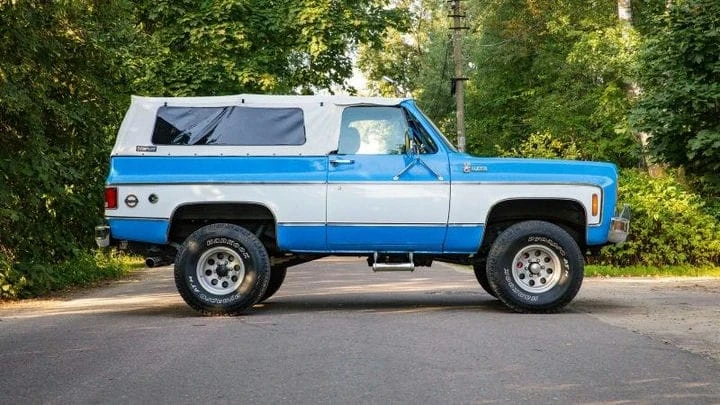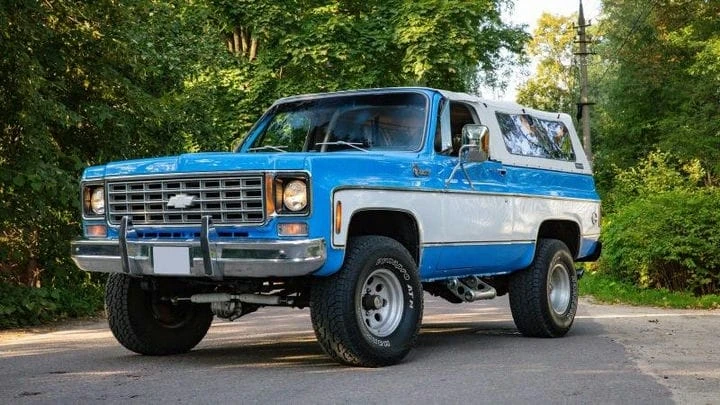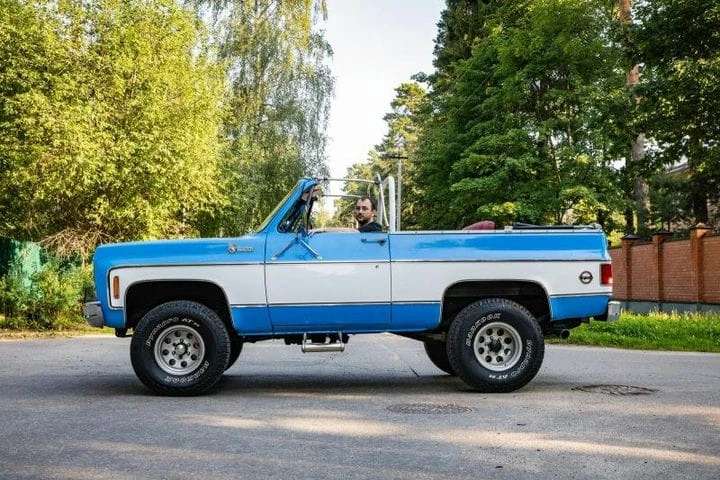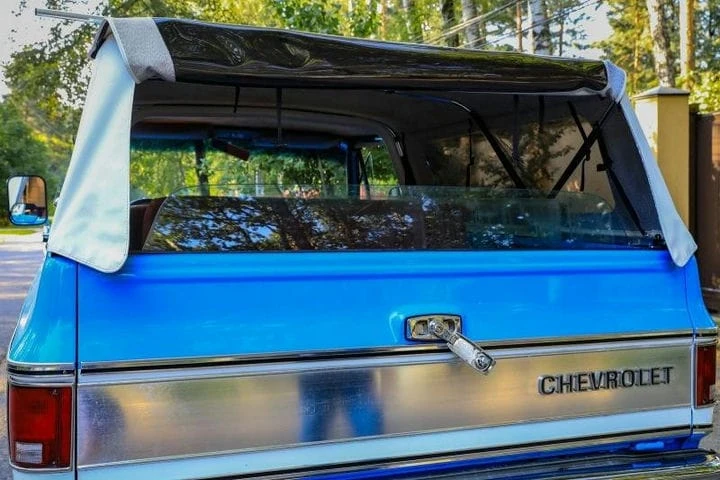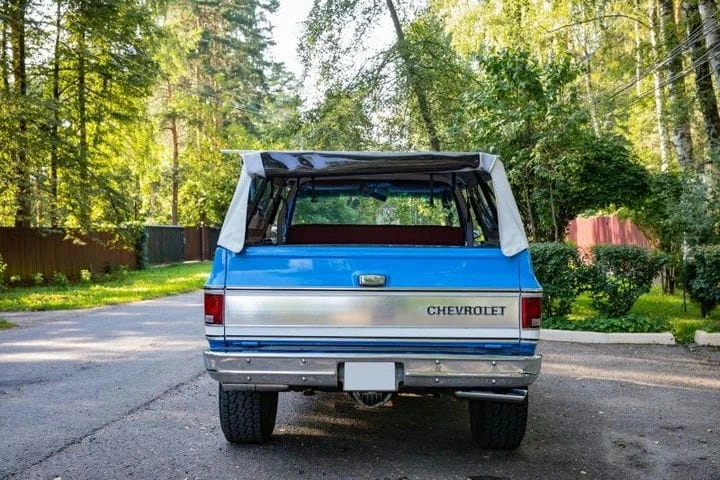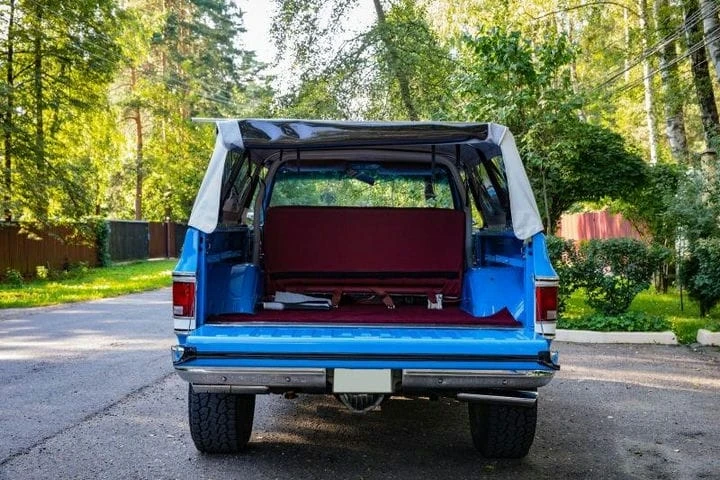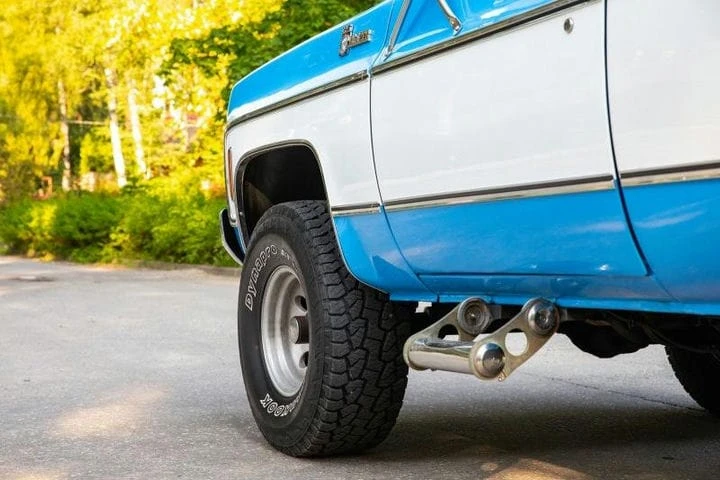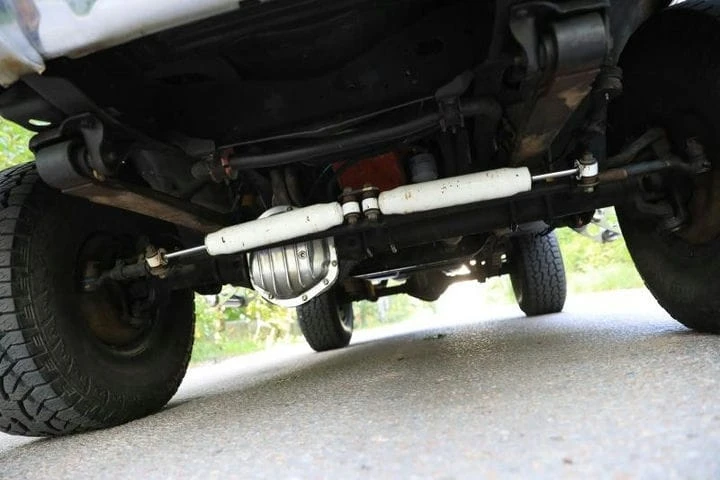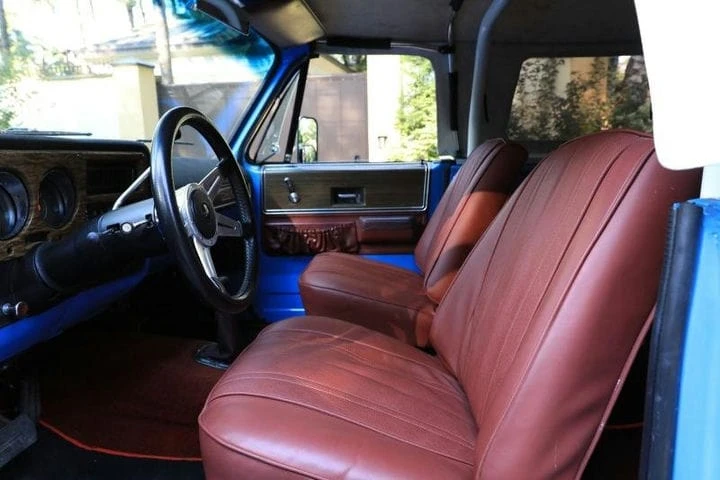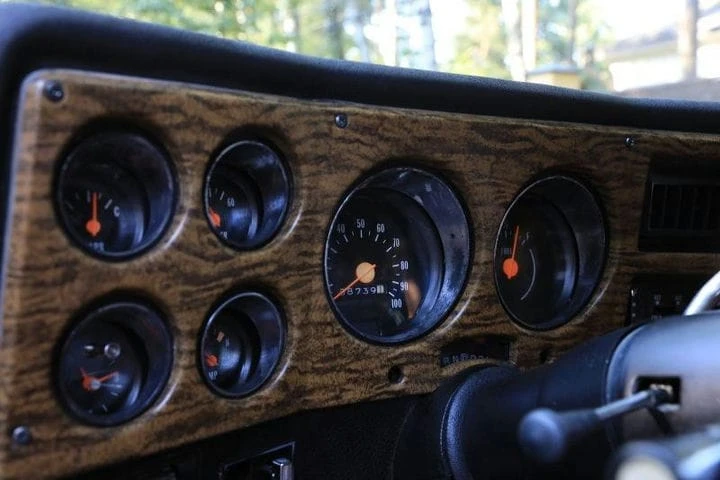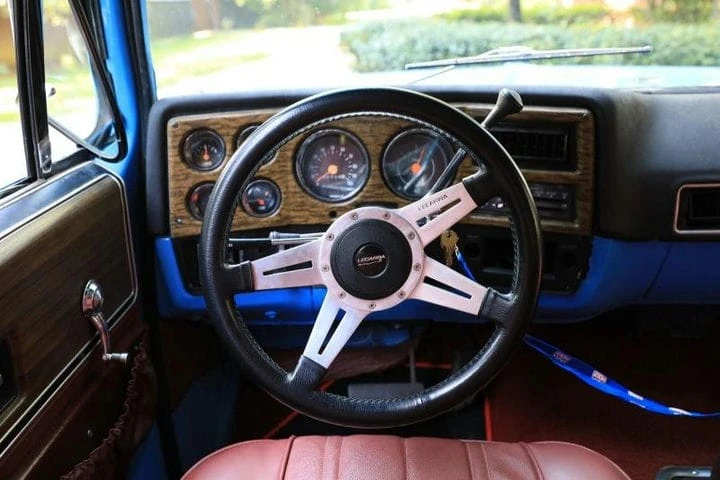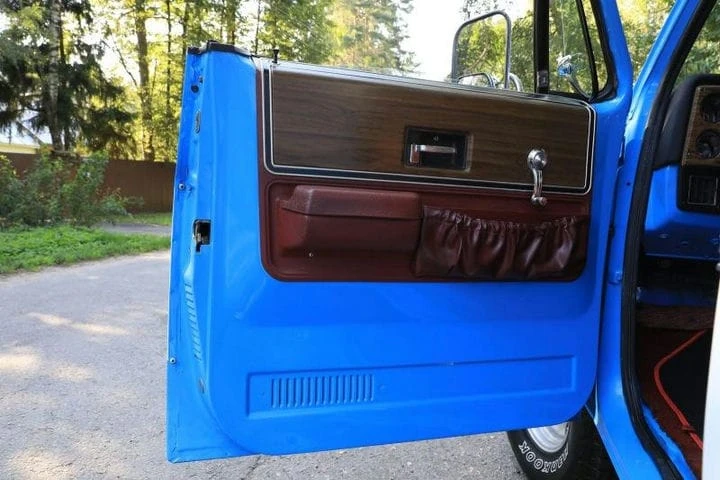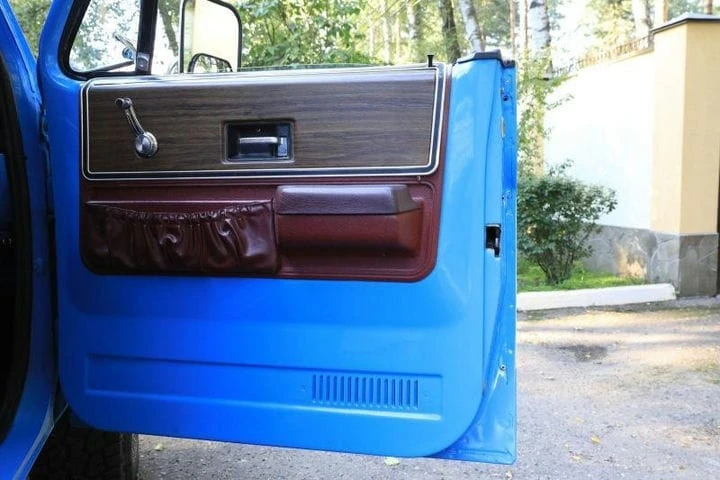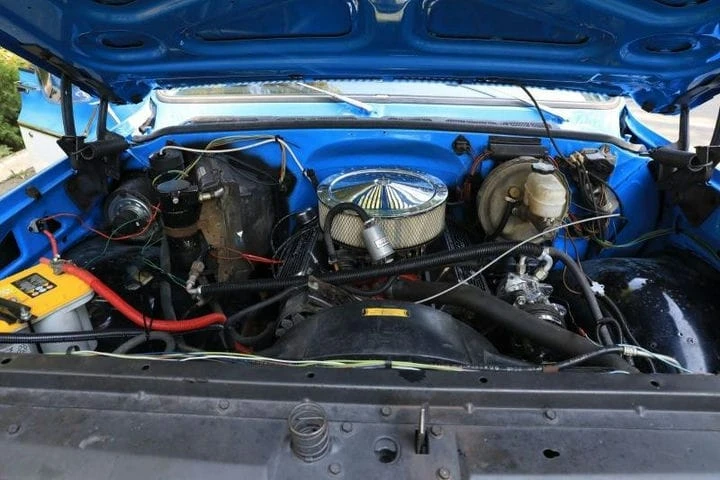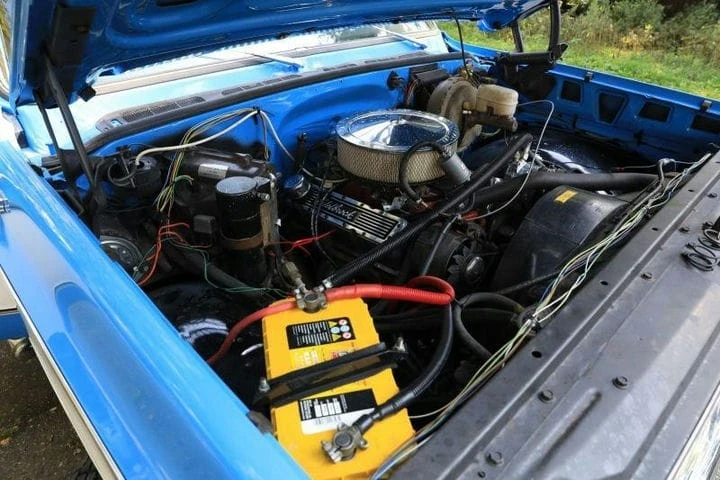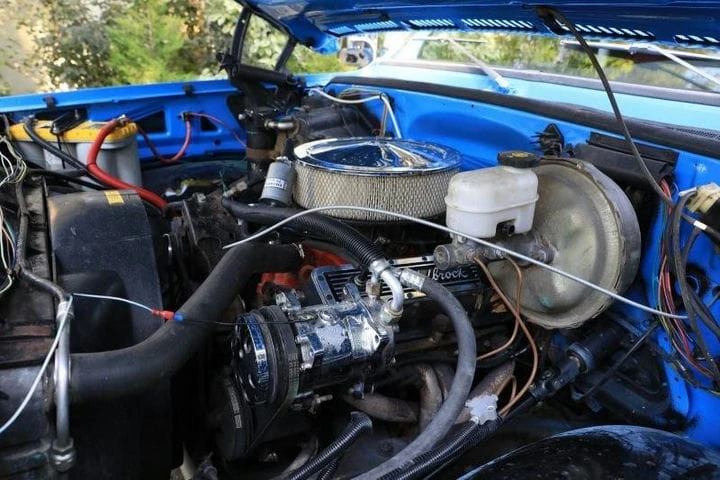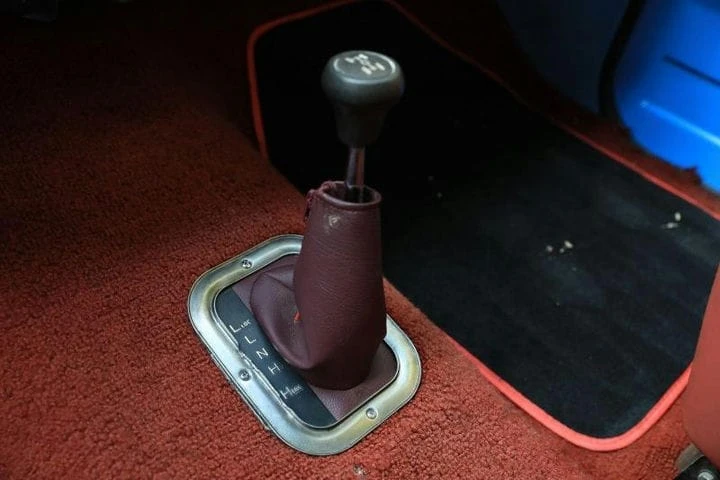V8, springs and permanent four-wheel drive: the experience of owning a 1974 Chevrolet Blazer K5
Looking at serious full-size SUVs, many sincerely complain: if only our Niva was like that! In fact, few people really look like a large-scale Niva, except perhaps the second-generation three-door Chevrolet Blazer K5 in a rare modification with permanent all-wheel drive.
Outside
This convertible is a real forwarder. Seeing this, even inveterate homebodies and old farts awaken the spirit of distant wanderings! And I want to take a closer look at the driver: in the role of the driver of this two-tone handsome man, you can see Harrison Ford in that very hat or, at worst, Dwayne Johnson from Amazon Treasures!
The awning, if desired, is removed completely and quickly enough. With some experience, this takes about two minutes. Below you can see a powerful safety arc, partially protecting on impact.
The rear glass here is smooth in the form of a transparent film sewn into the awning, but in fact it is double: a whole rear door glass is hidden under the awning.
A hallmark of all second generation K5 Blazers is the tailgate glass that slides into the door. This design is necessary for a body with a removable hardtop and for a convertible body. The rear door glass in this format cannot be made a separate element that rises on hinges, because there is nothing to attach it to from above. In addition, this cannot be done simultaneously with the rear door opening to the side, since after removing the lining, the rear door should not rise above the window line of the doors, so as not to serve as “anti-navigation”. As a result, the glass falls on the back door in the same way as on the side doors, and the folding handle of the “meat grinder:
By lowering the rear window, you can lower the side window. And sit on it, or even stand up – powerful cable loops and clips allow it.
Above the 315/75 R15 wheels, there is a huge margin in the height of the wheel arches, and this is not in vain, because the Blazer K5 is one of the champions in suspension articulation!
This copy has a light “beach” tuning; however, it is harmless and reversible. Like, for example, these steps, really useful at such a height of the body.
Axle gear covers are finished in high-gloss chrome. In addition to the controversial aesthetics, they allow you to slightly increase the amount of oil filling.
Trapezoidal steering dampers help in real off-road, and also compensate for some of the steering play inherent in helical steering gears.
inside
The salon is rudely ascetic in the right sense for a researcher! Textured faux carpet on the floor, vinyl chairs, masses of bare metal, all solid and solid. Of the elements of comfort – air conditioning, power steering and tilt steering column.
Tidy – finished in a fancy exotic wood:
Perhaps the only non-standard element in the cabin is the “sports” steering wheel from Lecarra:
The frame of the tent, in principle, is almost the same as on the UAZ – oblique arches, which, together with the awning, create the effect of self-supporting triangles.
The doors are frameless, and the protection of the interior from precipitation is provided here very simply – due to the entry of glasses under the edge of the canopy. In a good way, in order to smoothly close the door, you need to lower the glass a little, open it, close it and raise it completely again. Of course, this does not provide complete tightness, and moisture, dust and whistling wind can get into the cabin.
iron
The engine of this Blazer K5 is a Chevrolet Small Block V8, 5.7 liter, 240 hp, naturally carbureted. This is one of the most powerful engines for the Blazer – only the 6.6-liter gasoline and 6.2-liter diesel engines were larger.
Automatic transmission – Turbo Hydromatic TH350 – a simple three-stage hydraulic box without control electronics. The NP-203 dispenser from New Process Gear, which was used by many manufacturers, not only GM.
In endless garage suffering “if only our Niva was like that!” rarely when you compare the Niva with cars that are really technically similar … Usually, reproaching it for being narrow and miniature, they cite as an example large cars that are very nominally SUVs. And very rarely one of the “analogues” has (in stock, untuned) a really honest off-road arsenal, like our iconic VAZ-2121 with its permanent all-wheel drive, reduction gear and lockable center differential.
But the Chevrolet Blazer K5 in terms of equipment is a full-fledged Niva – the Niva that many would dream of seeing! This convertible has a transmission, rare for its family, with permanent all-wheel drive, a reduction gearbox and a locking center differential; these were produced only between 1973 and 1979, and quite a few of these machines were built. The vast majority of all K5 Blazers had a part-time plug-in front end instead of a permanent permanent front end. In addition, the Blazer K5 has really huge suspension travel: two solid axles are suspended on longitudinal springs, and the front ones also have a reverse curve to increase travel. To catch the diagonals hanging from it!
In addition, the Blazer has the GM Gov-Lock (also known as the Eaton G80) automatic lock. It is a centrifugally driven friction system that behaves like a normal free differential in straight line motion. But when slipping in the mud or on ice, when one of the drive wheels starts to spin faster, the dog clutch captures the clutch package that closes the axle shafts. Also, this lock can be conditionally activated “manually” if you suddenly slow down sharply in low gears. Irregularities in the road surface will definitely give a difference in the speed of the wheels and the lock will be blocked. Automatic shutdown occurs when reaching a speed of about 40 km / h.
Regarding the repair, the owner has nothing special to say: the car was bought in excellent technical condition, it is operated only in the summer and without extreme sports, so there is nothing special to repair on it. Well, what, in fact, can go wrong in the spring suspension, if it does not load the car beyond any measure? Engines and gearboxes, despite their age, capital without problems. They say the regular dispenser NP-203 is in short supply on the secondary, but again, this is unlikely to become a serious problem if it fails.
In move
Despite the apparent condominium and primitivism, the Chevrolet Blazer K5 convertible is very successful as a convertible. A high windshield with a very small slope does not contribute to fuel economy, forming a “brick” aerodynamics, but when driving without an awning, the disadvantage turns into a blessing – it does not explode on the Blazer! Does not blow in the face, does not blow in the eyes, in the neck.
Although the car does not even have headrests. This problem is rarely completely solved even in the most modern passenger convertibles, and it was rather unexpected to find such comfort in a car that does not go far in design and purpose from agricultural machinery.
The second advantage is a powerful air conditioner. Its characteristics are literally amazing: it fills the interior of an open car without a roof with cold air, and it is comfortable in a traffic jam in the sun at 30 degrees or more! It is enough to put on a cap so that the head does not bake, as they say, “direct fire”, and the climate system will cope with the heat and stuffiness.
On bumps, the car is very goaty – the short base and spring suspension affect. The brakes are tolerable, but not particularly impressive. And they should – they are tuned here, from Wilwood Engineering, expensive, discs in a circle, and in front there are already six-piston ones. The box works very well, shifting smoothly, smoothly, on time and predictably. But the nuance is in the main bridge pairs, which have a gear ratio of 2.7. This is a purely road version, not a traction version. And if you want to drive energetically and dynamically at urban speeds, that is, up to 60 km / h, which, in fact, is urban mileage in most cases, then, oddly enough, you have to constantly use a reduction range in the transfer case, doubling the number of gears on the bridges! Only in this case can you fully experience the notorious power of the mighty V8 locomotive. But 60-70 km / h in such conditions is the limit, because already in the third gear the speed cut-off is triggered, the gears howl – don't worry mom – and the consumption of less than 25 liters does not decrease if you switch the transfer case to the “H” mode, on a straight line, then the car rolls along the highway at a speed of 80-90 kilometers per hour at 1400-1500 (literally idle!) RPM, quietly, economically (relatively – 18 liters per hundred), safely. However, traction under the pedal is noticeably poor. But 60-70 km / h in such conditions is the limit, because already in the third gear the speed cut-off is triggered, the gears howl – don’t worry mom – and the consumption of less than 25 liters does not decrease if you switch the transfer case to the “H” mode, on a straight line, then the car rolls along the highway at a speed of 80-90 kilometers per hour at 1400-1500 (literally idle!) RPM, quietly, economically (relatively – 18 liters per hundred), safely. However, traction under the pedal is noticeably poor. But 60-70 km / h in such conditions is the limit, because already in the third gear the speed cut-off is triggered, the gears howl – don’t worry mom – and the consumption of less than 25 liters does not decrease if you switch the transfer case to the “H” mode, on a straight line, then the car rolls along the highway at a speed of 80-90 kilometers per hour at 1400-1500 (literally idle!) RPM, quietly, economically (relatively – 18 liters per hundred), safely. However, the traction under the pedal is noticeably bad, so the car rolls along the highway at a speed of 80-90 kilometers per hour at 1400-1500 (literally idle!) RPM, quietly, economically (relatively – 18 liters per hundred), safely. However, the traction under the pedal is noticeably bad, so the car rolls along the highway at a speed of 80-90 kilometers per hour at 1400-1500 (literally idle!) RPMs, quietly, economically (relatively – 18 liters per hundred), safe. However, traction under the pedal is noticeably poor.
Model History
Chevrolet released the first generation of the K5 Blazer in 1969 in response to the introduction of the Ford Bronco in 1965. The first generation was produced from 1969 to 1972. The compact (by American standards, of course) two-door, 5-seater SUV or 6-seater turned out to be a very popular format, which was clearly lacking in the abundance of station wagons of that time. True, it was the station wagon of the Chevrolet C / K family that gave the basis to Blazer: the frame was shortened, and a huge plastic “cap” was put on the body, which, moreover, was easily removed and allowed, if necessary, to convert the truck body back into a pickup truck. The plastic roof began in the first versions directly from the windshield frame, but later, due to rollover safety requirements.
The second generation lasted on the assembly line from 1973 to 1991. The body was significantly redesigned, reducing the removable part, which, during the transformation, no longer affected the middle of the front row cabin. The second generation also saw unsuccessful marketing of the model to law enforcement, from the military to the National Guard and sheriff's departments. The third generation K5 Blazer was produced for a very short time, from 1992 to 1994, and was already built on the new GMT400 platform, like the Chevrolet Tahoe. In fact, the latter filled the Blazer K5 niche in 1995.

